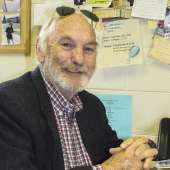Prejudice or behavior
I listened to a report last night that said that of all the school suspensions in Texas last year, 47% of the children who were suspended were black, even though they make up only 13% of the population.
Police statistics reveal similar numbers and this begs the question that has been asked by many since the Ď60s. Are blacks four times more likely to break the law or act up in school as whites or are school officials and police officers across the country four times more likely to take action against a black child in school or a black suspect in a crime than they are whites.
And is this discrepancy due to racial prejudice and/or discrimination or simply bad behavior on the part of the offender/victim? We donít know and we may never know because every police call presents a different scenario, a different victim, a different offender and a different set of circumstances that almost always leads to a different outcome. But there is a general rule of thumb in place in most police departments across the country that specifically defines when deadly force can be used. And that general rule states deadly force can be used only when someoneís life or personal safety is in imminent danger. Police officers used to be able to shoot fleeing felons; they canít legally do that anymore because no oneís safety or life is in danger. The rule seems crystal clear but because every situation is different, it seldom turns out to be as simple as it looks.
This is a problem that is foreign to almost all Red Willow County residents because of our racial heritage. As mentioned in the first paragraph, nation-wide, Blacks make up 13% of the American population but in Red Willow County, only 0.9% of its residents are Black, followed by 0.7% Indian, 0.4% Asian and 96.5% White. If you live in an area where the crux of this column does not exist, itís sometimes hard to understand its significance.
Thatís the way it was for me growing up in segregated Arkansas during the Ď50s and Ď60s. No blacks lived in my home town because there was a black settlement 5 miles south where they all lived but they did come to town to do their shopping. There was never any trouble because there was never any interaction. They stayed to themselves and we did the same.
In todayís world, racial politics donít seem to have gotten any better, despite and, some people say, because of the election of our nationís first Black president. Once again, statistics tell us a lot. A black person is much more likely to be killed by another black person than by a white person. A white person is much more likely to be killed by another white person than by a black person. Police officers are much more likely to use deadly force against a black than against a white. Of people convicted of felony murder, blacks are several times more likely to be executed by the state than whites are, especially if the victim of their crime was white.
We always talked in Police and Society class about an area of Interstate Highway in the urban Northeast part of the country where drivers were pulled over for the offense of DWB which meant driving while black and often times this was the only reason for a car being stopped. Is this outright racial prejudice or the thinking of a trained police officer that a black person is much more likely to have committed a crime than a white person?
Thereís no way we can answer that question because we canít get into the heads of officers. They know saying the latter wouldnít be acceptable so they make up another reason.
Are there police officers who carry racial prejudice around with them every day? Of course there are. There are basic personality traits that fit people who want to be police officers. One is a masculine, superiority complex that enjoys exerting his/her authority in part because theyíre wearing a badge and carrying a gun. On the other end of the spectrum, there are people who have never had any control over either their lives or the lives of others and desperately want that so they put on the uniform which artificially projects that image to other people. And within that combination of factors, racial prejudice can raise its ugly head too.
I was often asked as a professor if most police officers were racially prejudiced and I had to always couch my response by referring to the period of time that I was on a police department. It was the mid 1960s to the early 1970s where racial prejudice and confrontation were at the forefront of our public consciousness which is significantly different than the way things are today. It is no longer socially acceptable or politically correct to state your racial prejudice publically but the current situation reminds me of something my folks told me when I was growing up.
Itís much easier to change what a person says than what he thinks.

